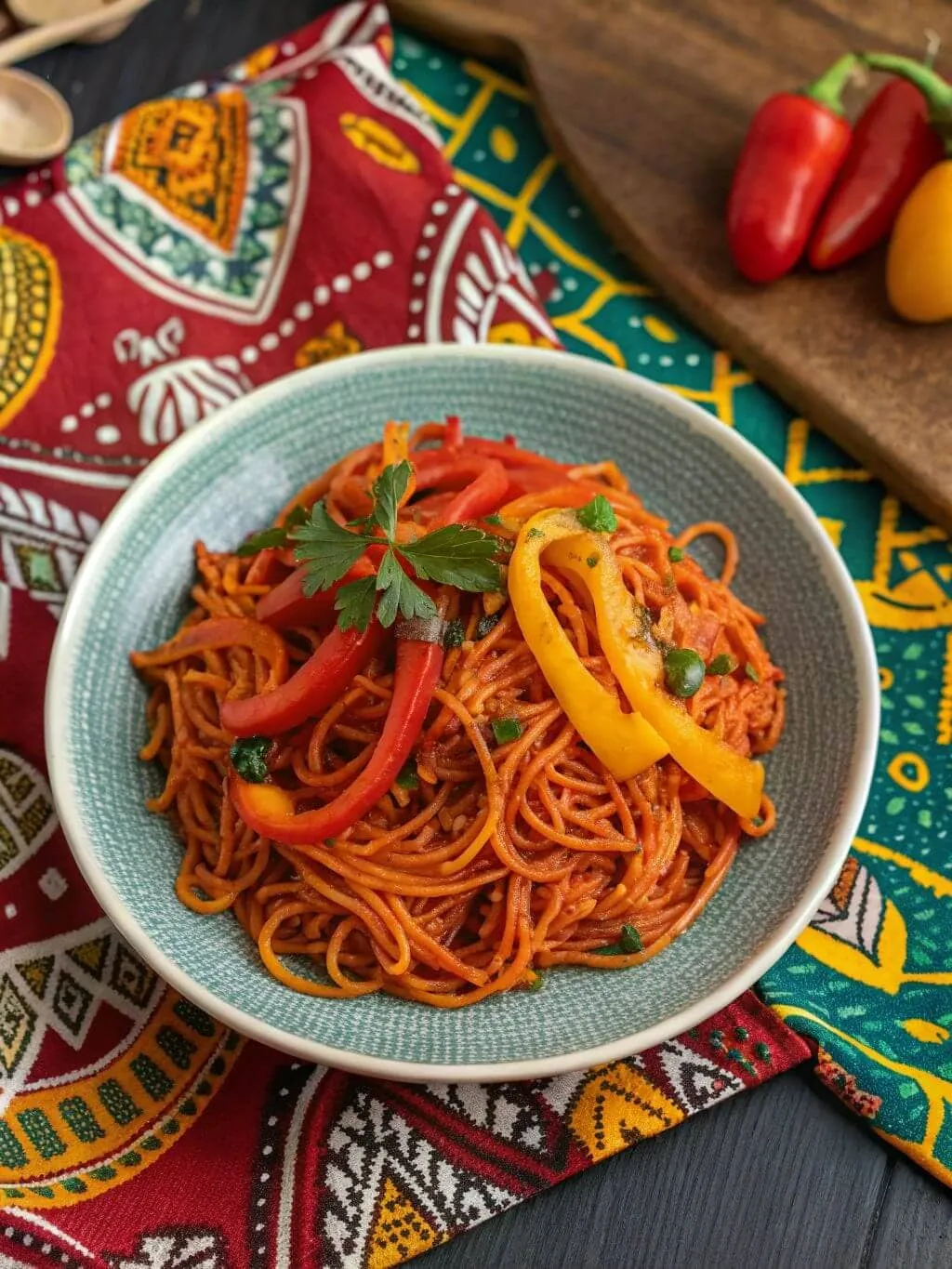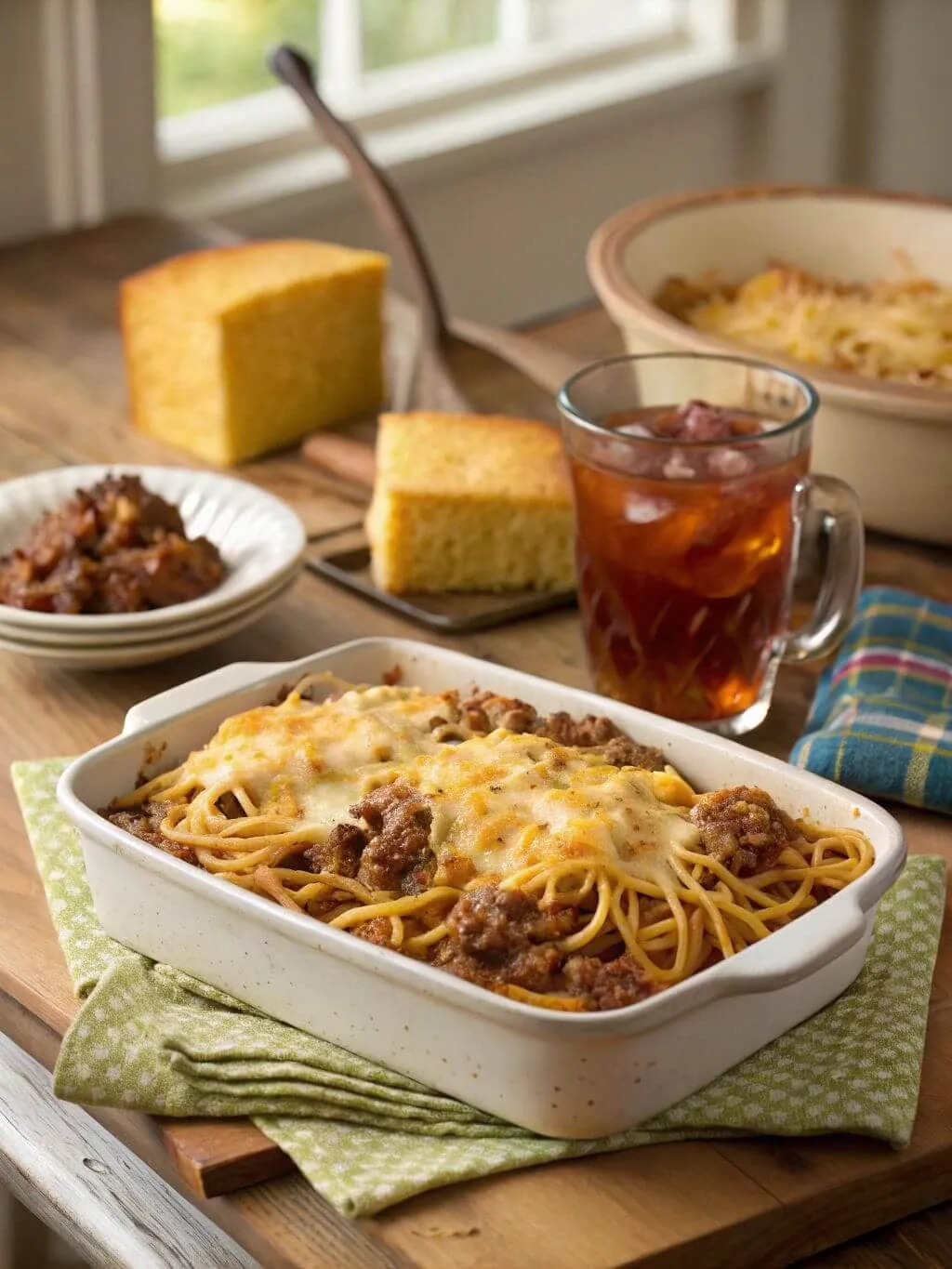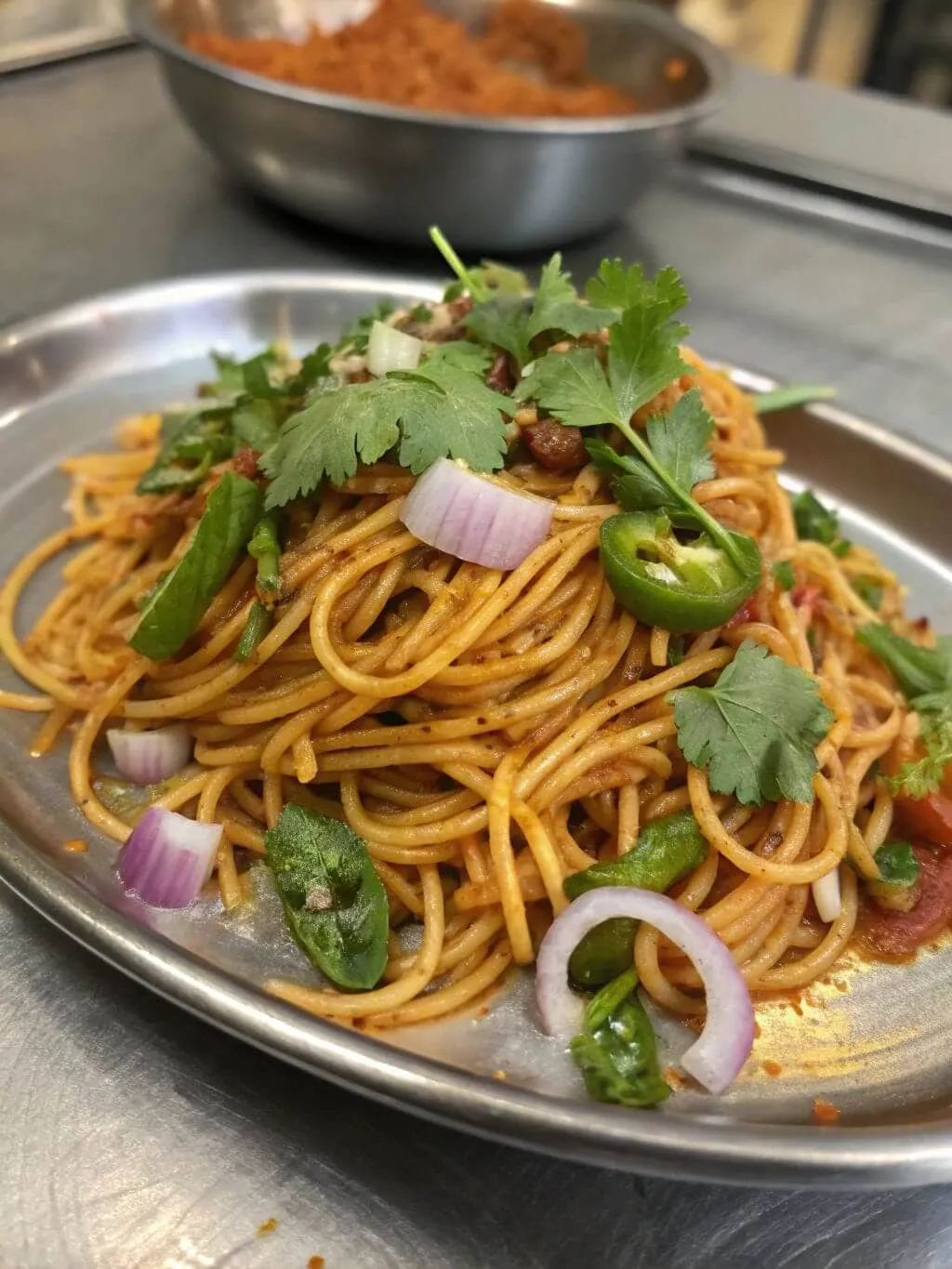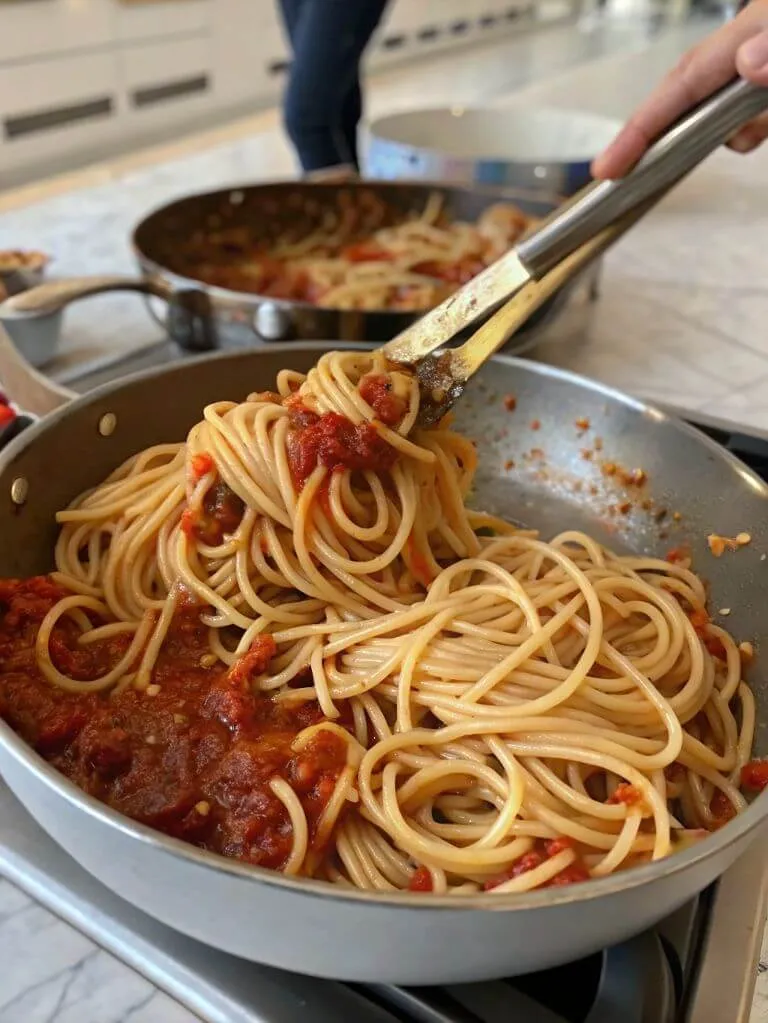By Olivia – Your Noodle Guide for Life
My journey with Immigrant Spaghetti began in my grandmother’s Roman kitchen, where I learned that noodles could be more than food—they could be memory, identity, and comfort. Years later, I tasted that same magic in a Tokyo ramen bar and a Southern soul kitchen.
Immigrant Spaghetti isn’t just pasta—it’s a story told in sauce-stained bowls passed down by immigrant hands. It blends Italian roots, American adaptation, and Black cultural soul into something uniquely ours.
This is the spaghetti that traveled the world—changing, surviving, thriving.
Cultural Crossroads: The Journey of Immigrant Spaghetti
Spaghetti didn’t start in America—but once it arrived, it adapted fast. Originally an Italian staple, spaghetti made its way to U.S. shores through waves of European immigrants in the late 19th and early 20th centuries. As it hit immigrant neighborhoods and Black kitchens, something shifted: the dish transformed.
Instead of imported tomatoes, cooks used canned ones. Instead of Parmigiano, they reached for cheddar or whatever was on hand. Seasonings changed too—garlic powder, sugar, red pepper flakes, even ketchup found their way into the sauce. These weren’t mistakes; they were survival moves. Creative choices. Cultural fingerprints.
For Black families in the American South, spaghetti became a weeknight hero: affordable, filling, and endlessly customizable. It was served at church potlucks, reunions, and Sunday suppers. Some added hot links or ground beef; others gave it a spicy kick.
That’s the heart of Immigrant Spaghetti—not what’s “authentic,” but what’s ours.
One Dish, Many Homes: Variations of Immigrant Spaghetti
There’s no single recipe for Immigrant Spaghetti—just expressions of it, shaped by region, culture, and necessity. Here’s how it shows up around the world:
🇳🇬 Nigerian Jollof Spaghetti
Bold and fiery, this version tosses spaghetti in a rich, tomato-pepper base inspired by Jollof rice. Seasoned with curry, thyme, bouillon cubes, and chili, it’s a fusion of West African spice and Italian technique—served at parties, street stalls, and dinner tables alike.

🇵🇭 Filipino Sweet-Style Spaghetti
Known for its bright red sauce sweetened with banana ketchup and sugar, this dish often includes sliced hot dogs or ground pork. It’s the ultimate comfort food—beloved at birthdays, holidays, and family gatherings.

🇪🇹 Ethiopian Berbere-Spiced Spaghetti
Introduced during the brief Italian occupation, spaghetti remains popular in Ethiopia. But the flavors are unmistakably East African—thanks to spicy berbere, garlic, and clarified butter (niter kibbeh).

🇺🇸 Southern Soul Food Spaghetti
A staple in Black Southern homes, this version often includes ground beef or turkey, plenty of garlic powder, sugar to balance the acid, and shredded cheese melted right on top. Some even bake it—turning spaghetti into a casserole-style comfort bomb.

🇮🇳 Desi Masala Spaghetti
Across India, spaghetti is often tossed with onions, tomatoes, cumin, turmeric, and green chilies. Sometimes a dash of soy sauce or ketchup appears, turning the dish into a spicy, Indo-Italian hybrid—quick, cheap, and wildly flavorful.

Why It Matters: The Heart of Immigrant Spaghetti
Immigrant Spaghetti isn’t just about what’s in the bowl—it’s about who made it, why they made it, and what they had to adapt to get it there.
For many of us, this dish represents more than a quick dinner. It’s a story of migration and survival. Of stretching ingredients to feed a family. Of creating something beautiful out of limitation. It’s Sunday supper in a Brooklyn apartment. It’s late-night leftovers after a double shift. It’s tradition, improvised.
Spaghetti may have Italian roots, but Immigrant Spaghetti belongs to everyone who ever had to swap ingredients, stretch a dollar, or stir love into a simmering pot.
It’s not just about food—it’s about belonging.
FAQs About Immigrant Spaghetti
What does spaghetti mean in Black culture?
In Black American culture, spaghetti is more than a meal—it’s a tradition. It shows up at Sunday dinners, potlucks, and holiday spreads. It’s affordable, flexible, and flavorful—making it a staple in many Southern households. For many, it’s a comfort food wrapped in cultural pride and personal history.
What is the difference between Italian spaghetti and American spaghetti?
Italian spaghetti tends to be minimalist: al dente noodles with a light, fresh sauce—often just olive oil, garlic, and a touch of tomato. American (and immigrant-influenced) spaghetti is saucier, meatier, and often sweeter or spicier. It embraces bold flavors, bigger portions, and personal twists.
Who brought spaghetti to the USA?
Spaghetti came to the U.S. with Italian immigrants in the late 1800s. As they settled in cities like New York, New Orleans, and Chicago, they adapted traditional recipes to fit what was available—often swapping expensive ingredients for canned goods and seasoning to taste.
What is the most famous spaghetti?
Globally, Spaghetti Bolognese is arguably the most well-known version, though it’s more popular outside of Italy than in it. In the U.S., classic spaghetti with meat sauce or meatballs reigns supreme. But Immigrant Spaghetti—the dish made from memory, not a recipe—is the most meaningful to those who know it.
Final Thoughts: A Bowl of Belonging
Immigrant Spaghetti is more than dinner. It’s a living story—told through every simmering pot and every family that made it their own. It’s proof that identity can live in the small, everyday moments: in a shared meal, a handed-down tweak, a plate passed around the table.
Whether you’re stirring sauce on a weeknight or reviving a tradition, this dish connects you to something bigger—history, culture, community.
So keep cooking, keep adapting, and never underestimate the power of spaghetti to bring people together.
Keep Slurping the Story:
Explore more noodle journeys and recipes:
- Culture and History of Noodles
- Easy Spaghetti Recipe
- Homemade Noodles Recipe
- Noodle Types and Varieties
- How Noodles Conquered the World
- Vegan, Keto, Gluten-Free Alternatives
📩 Got your own version of Immigrant Spaghetti?
Share it with me at [email protected]—I’d love to hear your story.

